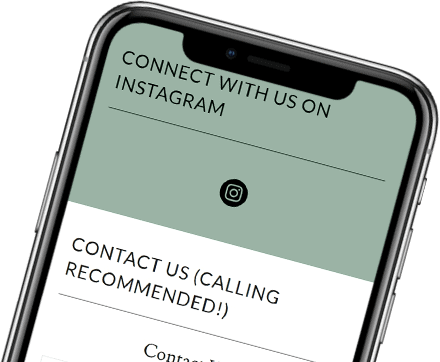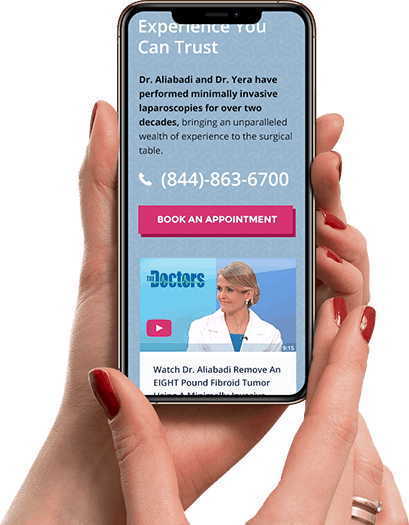Endometriosis is a gynecologic condition where the lining of the uterus (endometrial tissue) grows in the ovaries, bladder, or elsewhere around the pelvis. It affects millions of women globally and can lead to heavy periods and menstrual cramps.
Interstitial cystitis (IC), also called painful bladder syndrome, is a chronic condition where the bladder wall becomes irritated or inflamed, leading to feelings of pain, pressure, and tenderness around the bladder and pelvis.
Both conditions can lead to significant discomfort, often diminishing your quality of life. Pelvic pain can be a sign of a more severe problem, so it’s important to identify what’s causing your pain.

The “evil twins:” endometriosis and interstitial cystitis
Endometriosis and IC are often dubbed the “evil twins” because they share many similar symptoms. Common symptoms include:
- Chronic pelvic pain
- Painful intercourse
- Bladder pain
- Increased urinary frequency
- Irritable bowel syndrome-like symptoms
- Pain when voiding bowels
Chronic pelvic pain is the most common symptom and, for endometriosis patients, can intensify during menstruation.
Bladder symptoms, such as urinary urgency and frequency, are often present in both conditions. Both bladder endometriosis and IC patients can experience bladder pain or discomfort during urination.
Patients with either condition are more likely to suffer from irritable bowel syndrome, which causes similar symptoms. As all these conditions share so many symptoms, diagnosis can be difficult, even for highly experienced gynecologists.
How do doctors differentiate between endometriosis and IC?
For many patients, chronic pelvic pain results in visits to multiple specialists, including urology, gastroenterology, and gynecology clinics. Because it can be hard for patients to differentiate the causes and locations of pelvic and abdominal pain on their own, it is essential to contact a medical professional for diagnosis.
Although endometriosis and interstitial cystitis share some symptoms, knowing when the pain occurs and any linked events can aid in diagnosis.
Bladder pain syndrome, as IC is sometimes known, is usually associated with the fullness of the bladder – the fuller the bladder, the greater the discomfort. Endometriosis pain, on the other hand, isn’t.
Endometrial tissue outside the uterus can cause significant pain, especially during the menstrual cycle. The pain can extend to the ovaries, bowel, and pelvic lining.
Diagnosis of interstitial cystitis can be tricky and may require gynecologic evaluations and questionnaires.
More definitive tests for the diagnosis of IC include a potassium sensitivity test (PST), which measures the bladder’s reaction to potassium. A positive PST shows that the bladder’s protective lining is dysfunctional, a significant indicator of IC.
In patients with IC, doctors may employ a cystoscopy to visually inspect the bladder’s lining. This procedure can reveal ulcers or hemorrhages that can indicate IC.
A laparoscopy is more common for diagnosing endometriosis, helping identify the presence of endometrial adhesions or lesions outside the uterus.
Endometriosis symptoms
Endometriosis may spread beyond the pelvic organs and can lead to infertility. Along with the conditions mentioned above, symptoms of endometriosis can also mirror those of ovarian cysts or appendicitis.
Interstitial cystitis symptoms
While IC predominantly affects the bladder, its implications span far wider. Symptoms like urinary urgency, bladder pain, and pain during intercourse make IC an invasive condition, significantly hampering a patient’s quality of life.
Chronic pain, in particular, can lead to associated conditions like depression and anxiety, further impacting a patient’s quality of life. It shares symptoms with and can be mistaken for a urinary tract infection (UTI); however, unlike UTIs, IC doesn’t test positive for bacteria.

Call 877-760-3564 or click here to schedule online
Endometriosis treatment
Hormone therapy is often the first line of defense for endometriosis, as controlling or stopping the menstrual cycle prevents further endometrial growth. Doctors may prescribe birth control pills, hormone-releasing IUDs, or Gn-RH agonists and antagonists.
Laparoscopic surgical excision of endometriosis tissue is the most effective treatment option for endo patients. In extreme cases, a hysterectomy may be recommended.
Treating interstitial cystitis
Treatment for interstitial cystitis/painful bladder syndrome usually combines medication, physical therapy, and lifestyle changes.
Medication
Elmiron is the only oral medicine explicitly FDA-approved for IC. However, other medications, like tricyclic antidepressants and antihistamines, prove effective for some.
Lifestyle changes
Dietary changes can be critical in reducing the prevalence of IC flare-ups, and dieticians may recommend avoiding acidic foods or those high in potassium or caffeine. A guided elimination diet can help pinpoint problematic foods.
Therapy
Because pelvic floor dysfunction can exacerbate symptoms, pelvic floor physical therapy can alleviate pain. There are also guided exercises to help relax muscles around the bladder and provide pain relief.
Worried about pelvic pain? Contact the Outpatient Hysterectomy Center
If you’re grappling with unexplained pelvic or bladder pain, it’s essential to consult specialists who can correctly diagnose your condition and recommend treatment.
Drs. Thaïs Aliabadi and Ramon Year at the Outpatient Hysterectomy Center are renowned masters of gynecology, obstetrics, and gynecological surgery. Patients travel from around the country to be treated by them, and Dr. Aliabadi travels to teach her surgical expertise.
The Outpatient Hysterectomy Center is committed to providing women with the best possible health care and will always recommend the most effective, least invasive procedures.
We invite you to establish care with the Outpatient Hysterectomy Center. Please make your appointment online or call us at (844) 863-6700.
The Outpatient Hysterectomy Center is conveniently located for patients throughout Southern California and the Los Angeles area. At the Cedars-Sinai Medical Center, we are near Beverly Hills, West Hollywood, Santa Monica, West Los Angeles, Culver City, Hollywood, Venice, Marina del Rey, Malibu, Manhattan Beach, and Downtown Los Angeles.










